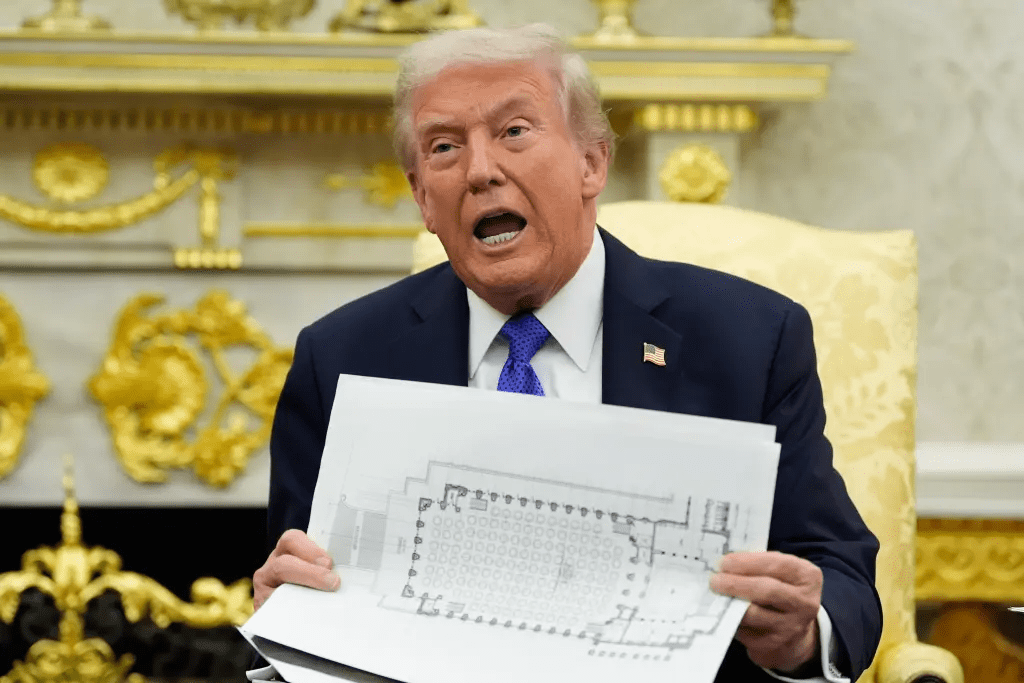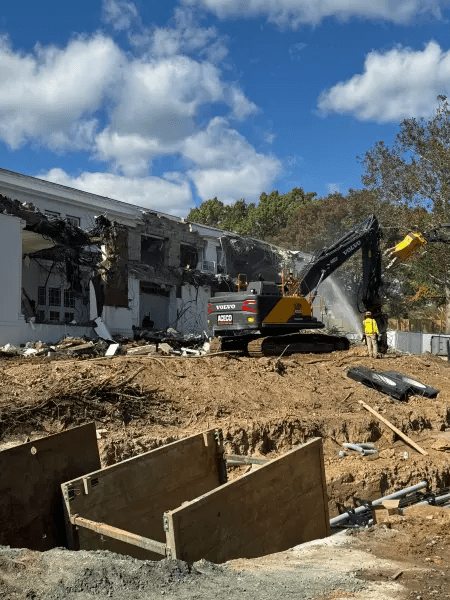Kamala Harris blasts Trump’s $300 M White House ballroom amid government shutdown—“babies are going to starve”
In a fiery and emotional interview this week, former Vice President Kamala Harris took direct aim at Donald Trump over his controversial White House renovation plans, calling them “tone-deaf” in the midst of a national shutdown. Appearing on “The Weekly Show with Jon Stewart,” Harris condemned what she described as Trump’s “obsession with vanity projects,” arguing that the president’s focus on a donation-funded ballroom reflected misplaced priorities while millions of Americans faced uncertainty about essential aid programs.

The ballroom project, which reports place in the $250–$300 million range, involves major reconstruction on the East Wing of the White House to build a sprawling 90,000-square-foot facility capable of hosting nearly a thousand guests. Demolition began in late October, raising immediate controversy as questions about funding transparency and preservation oversight surfaced. The administration has defended the project as an “upgrade funded entirely through private donations,” insisting it will bring the White House up to modern standards and accommodate large-scale diplomatic events. But critics, including Harris, see it as an unnecessary showpiece that sends the wrong message during a shutdown.

“It’s not lost on anyone that while families are struggling to buy food, the president is building a ballroom for his billionaire donors,” Harris said, visibly frustrated. “This guy wants chandeliers while children are losing meals. It’s obscene.” Her remarks struck a chord online, with supporters praising her for speaking bluntly about what they view as misplaced priorities. Detractors, meanwhile, accused her of playing politics and overreacting to what they consider a privately funded renovation.

Harris’s outburst reflects the deep tension surrounding the government’s shutdown, which has already affected federal workers and halted benefits for vulnerable groups. SNAP, Medicaid, and other critical services have faced interruptions, leaving millions unsure when relief might return. Harris has argued that the current crisis is entirely the responsibility of the Trump administration and Republican leadership, saying that “they control the House, the Senate, the White House—and now they’re holding the country hostage.”
At the heart of the controversy is symbolism. For Harris, the image of bulldozers tearing into the historic East Wing as social programs go unfunded epitomizes a disconnect between leadership and ordinary Americans. Preservation experts have also voiced concerns, warning that the East Wing—home to decades of history tied to First Ladies and public service—may lose its cultural identity under the new construction. Historians note that it would be the most dramatic architectural change to the White House in nearly 80 years.

Public opinion appears divided. Recent polling shows that a majority of Americans disapprove of the ballroom project, seeing it as unnecessary, though Trump’s supporters argue that the use of private donations shields taxpayers from the cost. Still, with the country facing widespread budget uncertainty and delayed pay for federal workers, the optics of cranes and construction equipment outside the nation’s most iconic residence have only intensified criticism.

Harris’s sharp comments may signal a broader political strategy, positioning herself as a voice for working families as Democrats seek to regain momentum ahead of 2026. Her delivery—passionate, unapologetic, and emotional—revives a familiar contrast between Trump’s brand of opulence and her emphasis on empathy and equality. Whether the exchange helps her politically remains to be seen, but it has certainly reignited debate about the meaning of leadership during national hardship.
As the dust continues to rise outside the White House, one question remains: in a nation facing hunger, uncertainty, and division, what does a $300 million ballroom really represent?



